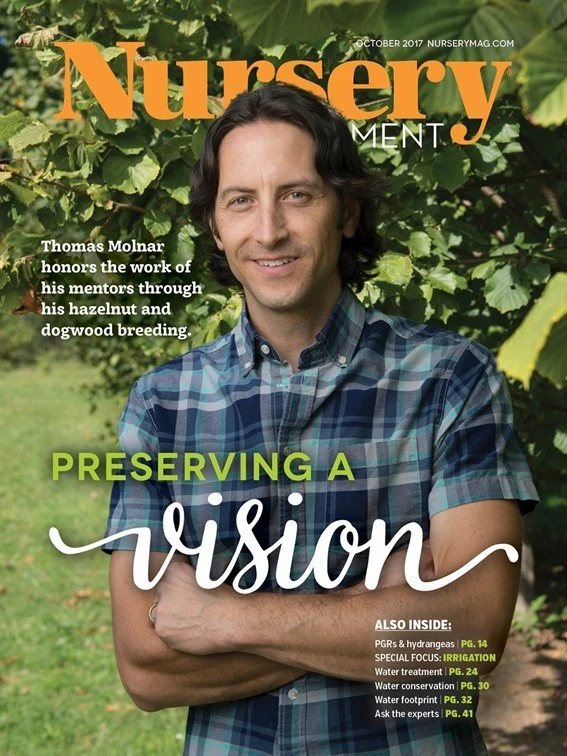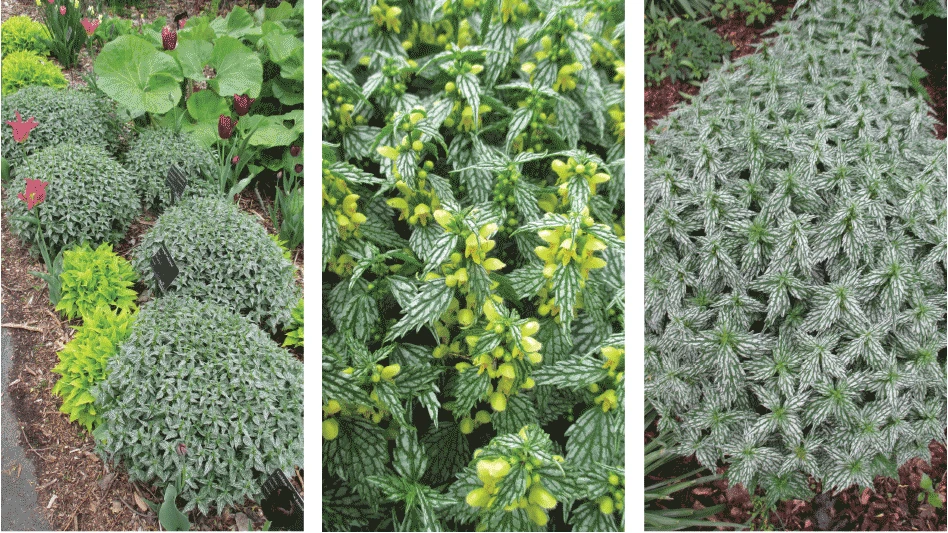BY CHRIS MANNING
A company’s end goal is to sell its products to consumers. Selling can be a complicated process, and every little detail matters. This is especially true when it comes to plants, where industry jargon and terminology can confuse consumers more than they inform them.
Take the term “conventional plant breeding.” While the term is considered everyday language in the green industry, Vineland Research and Innovation Centre (Vineland) researcher Dr. Alexandra Grygorczyk found that nearly 2/3 of consumers either could not offer a guess as to what it meant or believed it was a production practice like “growing plants with no pesticides” or “no human intervention.” Any mention of genes or genetics leads many consumers to assume we’re talking about genetically modified organisms, – GMO, for short. Since the first GMOs reached the market, they have become taboo amongst consumers.
“Not all consumers are the same and there are a lot of different opinions,” says Grygorczyk. “There are people against GMOs, but the majority are just unsure. And the reaction is generally ‘well I’ve heard they’re bad, but I don’t really know what to think about them.’”
That uncertainty bleeds into all other aspects of new variety development.This is the wariness Grygorczyk and other researchers at Vineland, located in Ontario, Canada, are trying to sift through. As she describes it, Grygorczyk’s work seeks to understand what the consumer wants and needs. Her research covers a broad range of topics – including studying consumer trends to identify new market opportunities, informing targets within the breeding programs, providing guidance on selection of new varieties for commercialization, and messaging of production practices to improve communication between experts and consumers.

Identifying the problem
Vineland’s team quickly came to realize that some of the words they were using didn’t mean the same thing to consumers as they did to the researchers.
Grygorczyk says that Vineland’s research into horticulture technology communication began as an offshoot of their research into people’s comfort with pest management methods. Early on, they found that the term “biological agent”, used to describe insects or microorganisms in biocontrol was mistaken for pesticides by nearly one out of three consumers. In some instances, people even associated the term with biological weapons.
“If something as seemingly benign as biological control could be so vastly misinterpreted, we wondered how we were faring with communication about plant breeding,” says Grygorczyk.
To better explore consumer inclinations, Grygorczyk used online surveys, in-person focus groups, and consumer interviews to understand what the public was hearing when different explanations of breeding technologies were used.
“We wanted to achieve a better understanding of how we [can] make sure we’re not misleading people by using technical jargon,” she says. “In one study, we started off with a focus group where we explained various breeding methods to people. We wanted to know what their immediate gut reactions were and what they associated those explanations with.”
Sifting through the confusion
One example Grygorczyk cites is the explanation of plant breeding using terms such as “mother plant” and “baby plant.” Although it seems intuitive to explain it that way, when plants are humanized with terms like mother, father or baby, people have a hard time switching out of that mind frame and imagine everything you say is being done to humans. Even something as fundamental as plant breeding turns into forcing plants into a relationship. It only gets more sensitive when you talk about newer technologies such as “marker-assisted selection.” To the average consumer, this term probably means nothing. But to a researcher, it’s a tool that analyzes a genome’s genetic code and then hints as to whether the plant will grow into a plant that you will want to continue breeding or discard.
In Vineland’s focus groups, using the terms mother plant or baby plant in explanations of “marker-assisted selection” lead into conversations about the ethics of whether you should choose to keep something alive or not, based on its genetic code. Regardless of what the main topic was, consumers’ minds became more fixated on what they understood words to be, even if they weren’t correct in their assumptions. This can also be attributed to being fearful of something new.
“It’s like when power lines were first put up,” Grygorczyk says. “People were worried about the electricity affecting their health. Or anything people saw as exotic, it kind of scared them. That’s why we’ve noticed that familiarizing things is very important, such as showing the researcher or grower’s face alongside the plant, instead of zooming in only on the plant and instrumentation.”
We wanted to achieve a better understanding of how we [can] make sure we’re not misleading people by using technical jargon.
Finding the correct response
So, what’s the solution? According to Grygorczyk, consumers are responding more and more to shared values conveyed by brands. Typically, most consumers don’t care about the technical details of how a new variety is cultivated or how it was developed. Instead, they want to know what the product stands for. Proper messaging also includes appropriate word choices, messaging framing and who is delivering the message, Grygorczyk says.

“Whether the motivation is to reduce land usage or to preserve natural habitats, those kinds of shared values resonate better and they make farming stories more effective,” she says. “The agricultural industry spends a lot of time out there in nature and they don’t want to ruin the environment. But we tend to skip over those stories and just get to the science.”

Get curated news on YOUR industry.
Enter your email to receive our newsletters.
Explore the October 2017 Issue
Check out more from this issue and find your next story to read.
Latest from Nursery Management
- NewGen Boxwood added to Proven Winners ColorChoice line
- Terra Nova releases new echinacea variety, 'Fringe Festival'
- American Horticultural Society names winners of 2025 AHS Book Awards
- Nufarm announces unified brand
- American Horticultural Society announces winners of 2025 Great American Gardeners Awards
- Shifting the urban environment
- The Growth Industry Episode 3: Across the Pond with Neville Stein
- What's in a name?






